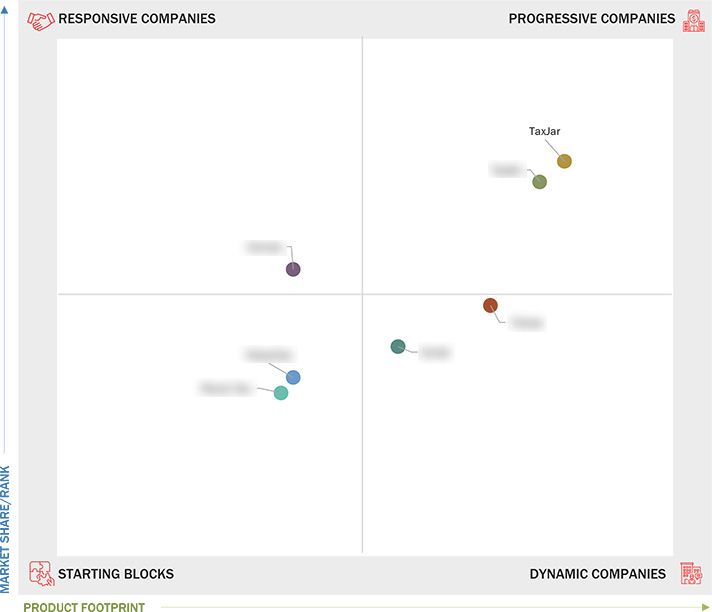Comparing 7 vendors in Tax Tech Startups across 0 criteria.
The Tax Technology (Tax Tech) market is experiencing rapid growth, driven by the increasing complexity of global tax regulations and the need for businesses to streamline compliance processes. The market encompasses a wide range of software solutions and services aimed at automating tax-related tasks, improving accuracy, and enhancing the efficiency of tax compliance for enterprises across various sectors. The proliferation of digital transformation initiatives, particularly the adoption of cloud computing, artificial intelligence (AI), and machine learning (ML), is significantly influencing the market. These technologies enable more sophisticated and automated tax solutions that cater to the demands of modern businesses. As cross-border trade continues to expand, so does the complexity of tax frameworks that businesses need to navigate, making tax technology essential for managing compliance across different jurisdictions. This trend is particularly evident in sectors such as retail, IT, telecom, and BFSI (Banking, Financial Services, and Insurance), where cross-border operations are more prevalent. Moreover, the rise of digital currencies and cryptotaxation presents new challenges that these technologies help address, offering tailored solutions for regulatory compliance.
Market Leadership Quadrant
1.1 Study Objectives
1.2 Market Definition
1.3 Study Scope
1.3.1 Markets Covered and Regional Scope
1.3.2 Inclusions and Exclusions
1.3.3 Years Considered
1.4 Currency Considered
1.5 Unit Considered
1.6 Limitations
1.7 Stakeholders
2.1 Introduction
2.2 Market Dynamics
2.2.1 Drivers
2.2.1.1 Complex cross-border trade tax regulations
2.2.1.2 State and local tax rate variability
2.2.1.3 Corporate ESG & tax transparency initiatives
2.2.2 Restraints
2.2.2.1 Lack of awareness of tax tech in developing countries
2.2.3 Opportunities
2.2.3.1 Integration with financial systems
2.2.3.2 Rise of digital currencies & cryptotaxation
2.2.4 Challenges
2.2.4.1 Frequent changes in tax laws & regulations
2.3 Trends/Disruptions Impacting Customer Business
2.4 Value Chain Analysis
2.5 Ecosystem Analysis
2.6 Investment and Funding Scenario
2.7 Technology Analysis
2.7.1 Key Technologies
2.7.2 Complementary Technologies
2.7.3 Adjacent Technologies
2.8 Patent Analysis
2.9 Trade Analysis
2.10 Porter’s Five Forces Analysis
2.10.1 Threat of New Entrants
2.10.2 Threat of Substitutes
2.10.3 Bargaining Power of Suppliers
2.10.4 Bargaining Power of Buyers
2.10.5 Intensity of Competitive Rivalry
3.1 Introduction
3.2 Key Player Strategies/Right to Win
3.3 Revenue Analysis
3.4 Market Share Analysis
3.5 Company Valuation and Financial Metrics
3.6 Brand/Product Comparison
3.7 Company Evaluation Matrix: Startups/SMEs
3.7.1 Progressive Companies
3.7.2 Responsive Companies
3.7.3 Dynamic Companies
3.7.4 Starting Blocks
3.7.5 Competitive Benchmarking: Startups/SMEs
3.7.5.1 Detailed list of key startups/SMEs
3.7.5.2 Competitive benchmarking of key startups/SMEs
3.8 Competitive Scenario
3.8.1 Product Launches
3.8.2 Deals
4.1 TAXJAR
4.1.1 Business overview
4.1.2 Products/Solutions/Services offered
4.1.3 Recent developments
4.2 TaxBit
4.2.1 Business overview
4.2.2 Products/Solutions/Services offered
4.2.3 Recent developments
4.3 Corvee
4.3.1 Business overview
4.3.2 Products/Solutions/Services offered
4.3.3 Recent developments
4.4 Fonoa
4.4.1 Business overview
4.4.2 Products/Solutions/Services offered
4.4.3 Recent developments
4.5 Anrok
4.5.1 Business overview
4.5.2 Products/Solutions/Services offered
4.5.3 Recent developments
4.6 TokenTax
4.6.1 Business overview
4.6.2 Products/Solutions/Services offered
4.6.3 Recent developments
4.7 Picnic Tax
4.7.1 Business overview
4.7.2 Products/Solutions/Services offered
4.7.3 Recent developments


 Bybit
Bybit
 Nov 2025
Nov 2025

